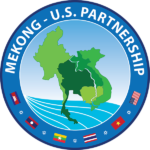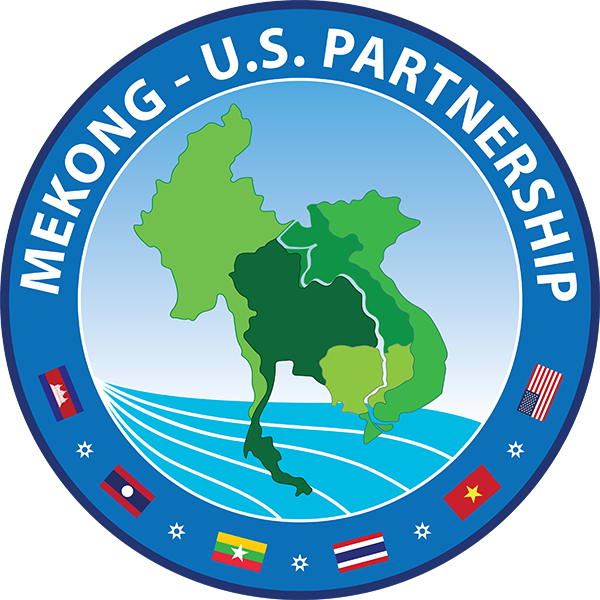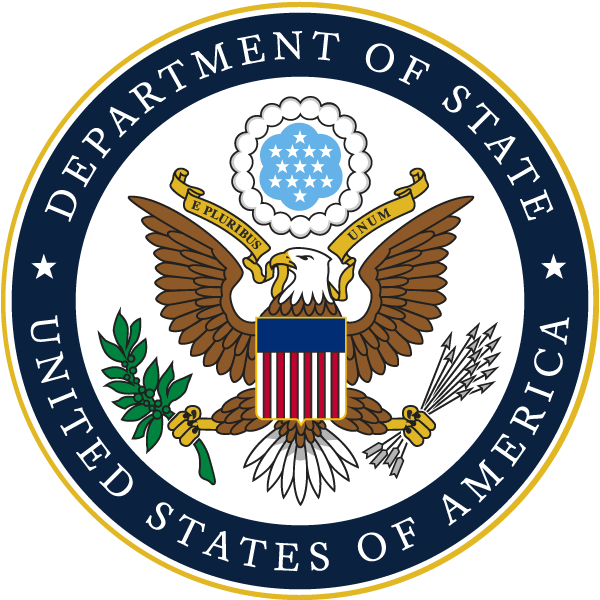Through the Mekong Water Data Initiative, our partners at PACT Thailand pulled together some helpful tools and resources related to environment and water data management. We hope you use the resources below to advance your learning on water issues in the Mekong and beyond.

Coastwide Reference Monitoring System (CRMS) by USGS
The CRMS design includes a suite of sites encompassing a range of ecological conditions in swamp habitats and fresh, intermediate, brackish, and salt marshes. Approximately 390 sites are monitored using standardized data collection techniques and fixed sampling schedules.

The home of the US Government’s open data
This site provides data, tools, and resources to conduct research, develop web and mobile applications, and design data visualizations.

Evapotranspiration Model (ET Demand) by USBR
The Bureau of Reclamation has collaborated with the Desert Research Institute and the University of Idaho in the development of a state-of-the-science computerized evapotranspiration (ET) model (ET Demands) that is being used to estimate historical and future agricultural irrigation water demands for the western United States.

Everglades Depth Estimation Network (EDEN) by USGS
Providing real-time hydrologic tools for biological and ecological assessments for adaptive management
The Everglades Depth Estimation Network (EDEN) is an integrated network of water-level gauges, interpolation models, and applications that generates daily water-level data and derived hydrologic data across the freshwater part of the greater Everglades landscape.

GLOBE Visualization System by NASA
Educational resources for schools and citizen scientists
GLOBE provides grade level-appropriate, interdisciplinary activities and investigations about the atmosphere, biosphere, hydrosphere, and soil/pedo-sphere, which have been developed by the scientific community and validated by teachers. GLOBE connects students, teachers, scientists, and citizens from different parts of the world to conduct hands-on science about their local environment and to put this in a global perspective.

Mekong Infrastructure Tracker by the Stimson Center
The Mekong Infrastructure Tracker database builds on existing data to present a comprehensive source of information on energy, transportation, and water infrastructure in the Mekong countries.

The NASAaccess
Open source software for climate, weather and hydrology
The NASAaccess is an open-source R software package under NASA Open Source Agreement (NASA-1.3) that can access, format, and generate gridded ASCII tables of climate (CMIP6, CMIP5) and weather data (GPM, TRMM, GLDAS) needed to drive various hydrological models, such as SWAT, VIC, and RHESSys. NASAaccess package is part of NASA Applied Sciences program vision Improving Lives by Looking to Earth.

National Center for Environmental Information (NCEI) by NOAA
When it was established in 1961, the US National Oceanographic Data Center was the first such organization in the world. Today, including NCEI, there are national oceanographic data centers and similar organizations in approximately 50 countries including Argentina, Canada, France, Germany, the People’s Republic of China, Russia, and the United Kingdom. In addition to data exchanges carried out through international organizations, NCEI also conducts direct bilateral data exchanges with data centers in dozens of countries.

NOAA National Weather Service: Southeast Asia Weather and Climate
NOAA produces weekly weather and climate guidance for Southeast Asia using a suite of numerical models that rely on observed and satellite data. Daily, 7-day and 30-day precipitation totals and max/min temperature charts are prepared using observed (GTS) data. NOAA’s Climate Prediction Center uses CMORPH (CPC MORPHing Technique) to produce a satellite-derived precipitation analysis at very high special and temporal resolution.

Reservoir and river modeling software by the University of Colorado Boulder
RiverWare is an advanced water resource modeling tool consisting of three sections: Simulation in RiverWare, Rule-based Simulation, and Multiple Run Management. RiverWare was developed by The Center for Advanced Decision Support for Water and Environmental Systems (CADSWES) at the University of Colorado Boulder, under joint sponsorship of the Tennessee Valley Authority, the Bureau of Reclamation and the US Army Corps of Engineers.

Geospatial data for development in the Lower Mekong
These decision support tools and applications have been developed to address on-the-ground issues, empowering decision-makers to act locally on climate-sensitive challenges such as disasters, agriculture, water management, ecosystem protection and land use.

Open Data Portal
Free and open geospatial data for the Lower Mekong region
The platform is built on ESRI technology with the goal of making geospatial data available to decision makers in the region in a format consistent with their operations. It is an open source platform that facilitates the creation, sharing, and collaborative use of geospatial data.

Surveying the world’s oceans
SWOT is being jointly developed by NASA and Centre National D’Etudes Spatiales (CNES) with contributions from the Canadian Space Agency (CSA) and UK Space Agency. The SWOT mission brings together two communities focused on a better understanding of the world’s oceans and its terrestrial surface waters. US and French oceanographers and hydrologists, with international partners, have joined forces to develop this satellite mission to make the first global survey of Earth’s surface water, observe the fine details of the ocean’s surface topography, and measure how water bodies change over time.

The programs included in WaterSMART are collaborative in nature and work is done in partnership and cooperation with non-Federal entities and other Federal agencies to reduce conflict, facilitate solutions to complex water issues, and stretch limited supplies.

Water And Agriculture Information Center (WAIC) by USDA
WAIC provides electronic access to information on water and agriculture. The center collects, organizes, and communicates scientific findings, educational methodologies, and public policy issues related to water and agriculture.

Global Reservoirs and Lakes Monitor (G-REALM) by USDA
The Global Reservoirs and Lakes Monitor (G-REALM) provides time-series data on water level variations for some of the world’s largest lakes and reservoirs. The G-REALM utilizes NASA/CNES/ESA/ISRO radar altimeter data over inland water bodies in an operational manner. The main database products are graphs and associated information in tabular form. G-REALM is hosted on the US Department of Agriculture (USDA) Foreign Agriculture Service website.

The Soil and Water Assessment Tool (SWATonline)
SWATOnline – A Web-based Decision Support Tool, is a modeling tool used by scientists to analyze many of the physical processes involved in the water cycle. SWATOnline is a web app that assists in using information and communication technologies to store, manage, and analyze water and climate data. The SWATOnline web app is generic and can be used globally, so more people can utilize SWAT model capabilities to access and visualize data. SWATOnline is part of NASA Applied Sciences program vision Improving Lives by Looking to Earth.

The ADB Data Library is a platform that hosts publicly available data from the Asian Development Bank.
Data is published according to open data standards (DCAT) which makes the datasets:
- Machine readable (e.g. by other data repositories, apps, visualization tools)
- Shareable
- Accessible through Application Program Interfaces (APIs)

Blue Map Database and Mobile Application by Institute of Public and Environmental Affairs
Comprehensive collection of environmental quality, emissions and pollution source supervision records published by the local governments of 31 provinces and 338 cities, as well as information mandatorily or voluntarily disclosed by enterprises based on relevant legislation and corporate social responsibility requirements.
Blue Peace Index by the Economist
Blue Map Database and Mobile Application by Institute of Public and Environmental Affairs

CSIRO Software, solve the greatest challenges through innovative science and technology.
CSIRO makes a range of software publicly available under a variety of licenses and locations. While some software and data is publicly available via CSIRO’s Data Access Portal, most software listed on this site requires that you create an account here and accept the respective license prior to downloading.

Delft-FEWS provides an open shell system for managing forecasting processes and/or handling time series data.
Delft-FEWS incorporates a wide range of general data handling utilities, while providing an open interface to any external (forecasting) model. The modular and highly configurable nature of Delft-FEWS allows it to be used effectively for data storage and retrieval tasks, simple forecasting systems and in highly complex systems utilising a full range of modeling techniques.

Software Simulation Products and Solutions
Deltares offers support on a number of software products. Direct to the support-section of a product.

It is designed to simulate all aspects of water resource systems to support Integrated Water Resource Management
The eWater Toolkit is a web-based distribution point for hydrological, ecological and catchment management models, databases and other resources for land and water management.

Freshwater Health Index (FHI) by Conservation International
The Freshwater Health Index (FHI) allows resource managers, engineers, policy makers and other stakeholders to evaluate scenarios, understand tradeoffs, prioritize interventions and communicate basin health.

Hydrological data and maps based on Shuttle Elevation Derivatives at multiple Scales
HydroSHEDS is a mapping product that provides hydrographic information for regional and global-scale applications in a consistent format. It offers a suite of geo-referenced data sets (vector & raster) at various scales, including river networks, watershed boundaries, drainage directions, and flow accumulations.

Debris Tracker is designed to help citizen scientists like you make a difference by contributing data on plastic pollution in your community.
Every day, dedicated educational, non-profit, and scientific organizations and passionate citizen scientists from all around the world record data on inland and marine debris with our easy-to-use app, contributing to our open data platform and scientific research.

Open Source Geospatial Data Management and Analysis Software
The Open Data Cube (ODC) seeks to increase the value and impact of global Earth observation satellite data by providing an open and freely accessible exploitation architecture. The ODC project seeks to foster a community to develop, sustain, and grow the technology and the breadth and depth of its applications for societal benefit.

A platform by East-West Management, Inc.
The platform supports data and digital rights that are accessible to all citizens across the Mekong region. The target audience of civil society, private sector, government, academia, and marginalized communities utilize ODM’s rich repository of data and information to support research, analysis, and decision making.

A user-friendly geospatial analysis tool for analyzing renewable energy potential and informing decisions
RE Explorer provides renewable energy data, analytical tools, and technical assistance to developers, policymakers, and decision makers in developing countries. RE Explorer enables users to make meaningful decisions that support low-emission development and ultimately reduce greenhouse gas emissions.

Satellite remote sensing to monitor key data for sustainable agricultural production and natural resources management
WaPOR is FAO’s portal to monitor water productivity through open-access satellite data. The portal assists countries in monitoring water productivity, identifying water productivity gaps, proposing solutions to reduce these gaps and contributing to a sustainable increase of agricultural production. At the same time, it takes into account ecosystems and the equitable use of water resources so as to reduce water stress.

A one-stop shop for water and agriculture data
IWMI’s Water Data Portal (WDP), following “one-stop shop” approach, provides access to a large amount of data related to water and agriculture. WDP contains meteorological, hydrological, socio-economic, spatial data layer, satellite images as well as hydrological model setups.

Water use and Nexus opportunities in the Central Highlands of Viet Nam by IUCN
IUCN provides a neutral space in which diverse stakeholders including governments, NGOs, scientists, businesses, local communities, indigenous peoples organisations and others can work together to forge and implement solutions to environmental challenges and achieve sustainable development.

Meteorological and hydrological information for the security and well-being of society
The WMO provides data and information for addressing major challenges such as food security, water resources management, reduction of pollution, decision-making related to the health sector, transport, and tourism.

Global Development Data
A free and open access platform that contains reliable statistical data from member countries designed to be searchable and downloadable to use as essential tools for supporting critical management decisions.

World Bank’s Information on Water Resources Management
The World Bank helps countries ensure sustainability of water use, build climate resilience and strengthen integrated management.

The MRC Data Portal contains master catalogues of monitoring data and related information under Mekong River Agreement.

MekongInfo is a platform sharing information and knowledge in Integrated Water Resources Management (IWRM) in the Mekong region to stakeholders.

MRC Socio-economic Database
Basin-wide official socio-economic data of Cambodia, Laos, Thailand and Vietnam
Socio-economic database to support and strengthens the assessment of social impacts and opportunities in the Lower Mekong Basin.

The platform is the aggregated water resources management data from monitoring and forecasting operated by Hydro-Informatics Institute of Thailand.
Operated by Vietnam Water Cooperation Initiative (VACI), ASEAN Water Portal contains precipitation, soil moisture, and evapotranspiration monitoring data, forecast, anomalies in Mekong Basin.
The system of forecasting stream flow in Mekong River was jointly developed by National Center for Water Resources Planning and Investigation of Vietnam, National University of Civil Engineering of Vietnam, USAID, and University of Washington.
 Mekong - U.S. Partnership
Mekong - U.S. Partnership












































